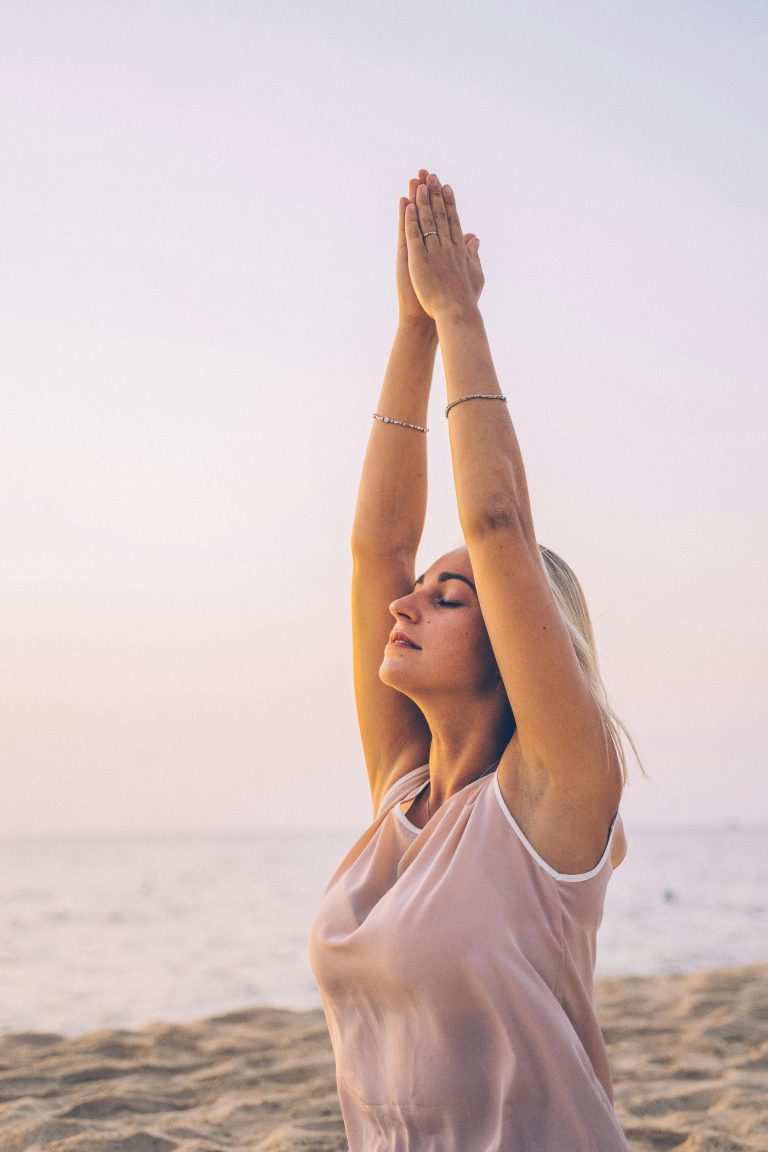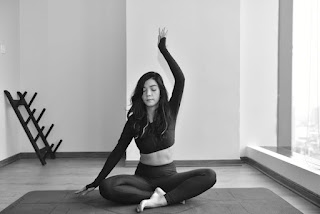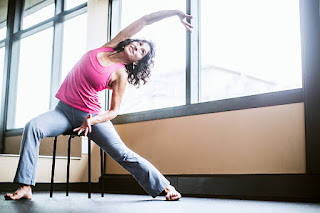How to Achieve Calm Meditate: A Guide to Calming Meditation
Introduction to Meditation
What is Meditation?
When I first started meditating, my views on what it was were vastly different from how I see the practice today. Initially, I looked at meditation as a way to unlock the secrets of the universe, guided by YouTube videos from monks. For years, I relied solely on this guided meditation. Today, I see meditation not only as a vessel for unlocking universal secrets but also as a way to check in and connect within. Over the years, I’ve learned much about meditation and the numerous ways people interpret and practice it.

Meditation is the practice of allowing thoughts to come and go, recognizing and releasing them without judgment. It involves intentionally bringing one’s attention and awareness to the present moment. Regular meditation practice can help reduce stress and anxiety and improve overall well-being. The Calm app offers features like breathing exercises, guided meditations, and sleep stories to help users relax and reduce stress.
Preparing for Meditation
Creating a Conducive Environment
Creating a conducive environment is crucial for a successful meditation practice. When I first started meditating, I thought I needed a perfectly serene and aesthetically pleasing space. However, I soon learned that it’s more important to meet yourself where you are. Your meditation space doesn’t need to be perfect; it needs to be comfortable and free from distractions.
Begin by finding a quiet and comfortable spot in your home. This could be a corner of your bedroom, a section of your living room, or even a small outdoor area. The key is to choose a place where you feel at ease and are unlikely to be disturbed. In my early days of meditation, I often meditated on my bed in my room. It wasn’t perfect, but it was a space where I could sit comfortably and focus.
To enhance the atmosphere, you might consider incorporating nature sounds or white noise. These sounds can help mask any background noise and create a calming environment. I personally find that the sound of a gentle rain or calming beats helps me relax and center myself. However, this is entirely optional and should be tailored to what makes you feel most at peace. A conducive environment can also promote better sleep, including achieving a state of deep sleep.
When it comes to your posture, sit in a way that feels comfortable for you. I prefer to sit with my back straight, as it helps me stay alert and focused. However, if lying down feels more relaxing and helps you concentrate, then that is perfectly acceptable. The goal is to find a position that allows you to stay present without discomfort.
Remember, your meditation space and practice don’t need to be perfect from the start. Over time, as you become more comfortable with meditation, you can refine your space and practice. The important thing is to start where you are today, with what you have, and allow your practice to grow naturally.
Mindfulness Meditation
Understanding Mindfulness Meditation
I have found mindfulness meditation to be one of the most accessible forms of meditation. It’s a practice that can start small, even with just 10 seconds a day. I turned to mindfulness-based meditation during a particularly challenging period in my life when routine and structure were absent. This practice became a beacon of stability for me.
During this time, I would begin by taking a deep breath and bringing my attention to my feet, feeling the texture of my socks and shoes as I stood doing the dishes. With the next breath, I would focus on the sensation of water and soap on my hands. Another breath would bring my awareness to the air around me and the light streaming in through the window. These small moments of mindfulness helped me stay grounded and present.
Over time, mindfulness became a vital tool for managing my social anxiety. I started incorporating mindful moments into my daily activities. For instance, while out and about, I would take a moment to be aware of my body language and posture. One small but significant practice was checking the position of my shoulders each time I got into the car. If they were tense and raised, I consciously relaxed them. Initially, I was often critical of myself, thinking, “I’m always so tense,” or “There I go again, clenching my jaw.” These thoughts were counterproductive.
As my practice grew, I learned to give myself space to struggle and understood that how I reacted to these struggles was crucial. Instead of berating myself for tension, I began to observe it without judgment and gently redirected my awareness to a neutral stance. This compassionate approach allowed me to cultivate a more effective and enjoyable mindfulness practice.
Mindfulness meditation involves intentionally bringing one’s attention to the present moment. This practice can help reduce stress and anxiety, leading to improved overall well-being. Regular mindfulness meditation can foster a greater sense of calm and inner peace. Additionally, it is highly effective in calming anxiety through guided meditation and mindfulness practices.
Mindfulness Meditation Techniques
Focusing on your breath is a fundamental mindfulness technique. Pay attention to the sensation of air moving in and out of your body. When your mind wanders, gently bring your attention back to your breath without judgment. Another effective method is a body scan meditation, where you bring your awareness to different parts of your body, noticing any sensations or feelings without judgment. This practice can also help you fall asleep by promoting relaxation and reducing stress.
Guided Meditations for Beginners
1-Minute Meditation for Stress Relief
A simple way to start is with a 1-minute meditation for stress relief. Begin by taking a deep breath in and exhaling slowly, feeling any tension leave your body. Focus on your breath, noticing the sensation of air moving in and out. Let go of any thoughts or worries, and remain present in the moment.
Exploring Different Types of Meditation
While mindfulness meditation is a powerful and accessible practice, there are many other types of meditation that offer unique benefits and experiences. Exploring different types can enrich your practice and help you discover what resonates best with you. A meditation teacher can provide valuable guidance in exploring these different types of meditation.
Loving-Kindness Meditation
Loving-kindness meditation, also known as Metta meditation, focuses on developing an attitude of love and compassion towards oneself and others. When I first started practicing loving-kindness meditation, I found it challenging to direct compassion towards myself. However, with consistent practice, I began to feel a genuine warmth towards myself and others. This practice involves silently repeating phrases such as “May I be happy, may I be healthy, may I be safe,” and then extending these wishes to others, including loved ones, acquaintances, and even those with whom you have conflicts. Over time, loving-kindness meditation can foster a sense of warmth and empathy, reducing feelings of anger and resentment. I noticed a significant shift in how I interacted with people around me, becoming more patient and understanding.
The ‘Daily Calm’ program is particularly beneficial for loving-kindness meditation, as it provides daily guided sessions that help cultivate mindfulness and compassion.
Transcendental Meditation
Transcendental Meditation (TM) is a technique that involves silently repeating a specific mantra to settle the mind and reach a state of deep relaxation and consciousness. Unlike mindfulness meditation, which focuses on present-moment awareness, TM aims to transcend ordinary thinking and reach a state of pure awareness. I was initially skeptical about the effectiveness of repeating a mantra, but after giving it a try, I found that it helped me achieve a deep sense of calm and clarity. Practitioners often find that TM helps to reduce stress, improve concentration, and promote overall mental clarity. For me, incorporating TM into my routine provided a much-needed mental reset during stressful times.
Zen Meditation
Zen meditation, or Zazen, is a form of seated meditation that is central to Zen Buddhism. It involves focusing on the breath and observing thoughts and experiences without attachment or judgment. Practitioners typically sit in a specific posture and follow a set of guidelines to deepen their practice. I remember my first experience with Zen meditation was at a local Zen center, where the disciplined approach and the quiet, communal atmosphere profoundly impacted me. Zen meditation emphasizes simplicity, discipline, and the direct experience of the present moment, making it a profound practice for those seeking spiritual growth. Over time, this practice helped me develop a deeper sense of presence and inner stillness.
Guided Meditation
Guided meditation involves following a narrator or guide who leads you through a meditative experience. This type of meditation can be particularly helpful for beginners, as it provides structure and direction. Guided meditations can focus on various themes, such as relaxation, healing, or visualization. I often turn to guided meditations when I need specific guidance or when my mind feels particularly scattered. They are widely available through apps, online platforms, and meditation centers. Following a guided meditation helped me stay on track and made the practice feel more approachable, especially when I was just starting. Sleep stories, a form of guided meditation, are also effective for better sleep.
Chakra Meditation
Chakra meditation focuses on balancing the body’s energy centers, known as chakras. This practice involves concentrating on each chakra, starting from the base of the spine and moving up to the crown of the head. Visualization, mantras, and specific breathing techniques are often used to activate and balance the chakras. I was introduced to chakra meditation during a yoga retreat, and it became a powerful tool for enhancing emotional stability and physical health. Chakra meditation can help enhance emotional stability, physical health, and spiritual well-being. Each session left me feeling more balanced and energetically aligned.
Yoga Nidra
Yoga Nidra, or yogic sleep, is a form of guided meditation that induces deep relaxation and a state of conscious awareness between waking and sleeping. During a Yoga Nidra session, practitioners lie down and are guided through body scans, breath awareness, and visualization techniques. This practice can be incredibly restorative, helping to reduce stress, improve sleep, and promote overall well-being. I often use Yoga Nidra when I feel particularly exhausted or stressed. It’s amazing how a 30-minute session can leave me feeling rejuvenated and at peace.
By exploring these different types of meditation, you can find practices that resonate with you and address your specific needs and goals. Incorporating a variety of meditation techniques into your routine can keep your practice fresh and engaging, helping you to experience the full spectrum of benefits that meditation has to offer.
Building a Consistent Meditation Practice
Establishing a Regular Meditation Routine
Consistency is key to mastering any skill, and meditation is no different. However, maintaining consistency can be challenging. I view consistency through two lenses: the current phase of life and the long-term perspective spanning 10-20 years. Having meditated for about 13 years, my routine has evolved significantly. I started with a nightly routine, then shifted to meditating between classes, struggled with maintaining the habit, and eventually found a sustainable rhythm. This journey taught me that the pendulum of consistency swings back and forth—there will be times when it feels easy and times when it seems nearly impossible. Remember, nothing lasts forever.
To establish a consistent meditation practice, try to meditate at the same time every day, making it a habit. One effective strategy is to stack meditation onto an existing habit. For instance, you can meditate before brushing your teeth in the morning or before getting out of the car for work. By associating meditation with a routine activity, it becomes easier to integrate into your daily life. Start with a short daily session and gradually increase the duration as you become more comfortable. Utilizing a meditation app or guided meditations can provide structure and help you stay on track.
Overcoming Common Obstacles
It’s normal for your mind to wander during meditation. When this happens, simply acknowledge the thought and gently bring your attention back to your breath. Don’t worry if this happens frequently—it’s all part of the practice.
Find a time of day when you feel most alert and focused to meditate. This could be in the morning, during a lunch break, or before bed. The important thing is to find what works best for you and stick with it.
Be patient with yourself. Establishing a consistent meditation practice takes time and effort. There will be days when it feels effortless and days when it feels like a struggle. Embrace both, knowing that each session contributes to your growth and well-being.
Advanced Meditation Techniques
Body Scan Meditation for Relaxation
Body scan meditation has been a profound practice for me, especially in releasing deep-seated tension and fostering a connection with my body. When I first began, I found it challenging to stay focused, but over time, it became a powerful tool for relaxation and awareness.
I start by lying down or sitting comfortably, ensuring I’m in a position that allows me to remain still for a while. I bring my attention to my toes, noticing any sensations without judgment. This part of the practice is about observation, not alteration. As I slowly move my attention upward, to my feet, ankles, and calves, I focus on the unique sensations in each area. Sometimes I feel warmth, other times tingling or pressure. The key is to simply observe.
Inevitably, my mind wanders during the practice. When this happens, I take note of where my attention was before it drifted. Often, I find that certain areas, like my shoulders or chest, are more prone to distraction. This observation can be revealing—perhaps there are deep feelings or stress stored in these areas that I’ve been avoiding. By gently bringing my focus back to these spots, I can start to address and release this tension. I also pay attention to my heart rate throughout the meditation. Noticing changes can provide insights into how different parts of the body and different thoughts impact my overall state of relaxation.

Walking Meditation for Mindfulness
Walking meditation has been another transformative practice for me, particularly on days when sitting still feels impossible. It turns a simple walk into a profound exercise in mindfulness.
I begin by finding a quiet and safe place for my walk—sometimes it’s a nearby park, other times it’s just a peaceful stretch of sidewalk. I start walking at a slow, deliberate pace, paying close attention to how my feet make contact with the ground. Feeling the heel strike first, then the ball of the foot, and finally the toes lifting off, becomes a rhythmic dance that grounds me in the present moment.
As I walk, I expand my awareness to include the sights and sounds around me. I notice the rustle of leaves, the chirping of birds, the gentle breeze on my skin. Each of these elements enhances my connection to the present moment. Initially, my mind would wander frequently, pulling me away from this serene state. But with practice, I learned to gently bring my focus back to the act of walking and my surroundings, without judgment.
Walking meditation has taught me to find mindfulness in movement, offering a dynamic way to stay present. It’s particularly beneficial during stressful times, helping me to remain grounded and calm, even when life feels overwhelming. If my mind drifts, I consider what triggered the distraction and gently steer my thoughts back to my surroundings, embracing the rhythm of my steps and the natural beauty around me.
Conclusion
The Power of Meditation Practice
Regular meditation practice can lead to a profound sense of calm and inner peace. Over time, the consistent practice of meditation can significantly reduce stress and anxiety, enhancing overall well-being.
As someone who has integrated meditation into my daily routine for many years, I have experienced firsthand the transformative effects it can have. Initially, the benefits were subtle—an occasional sense of tranquility or a brief moment of clarity. But as I continued to practice, these moments expanded into a more sustained sense of mindfulness and awareness.
Meditation has taught me to navigate life’s challenges with greater ease and composure. It has helped me to develop a deeper connection with myself, allowing me to understand and manage my emotions better. The practice of observing thoughts and sensations without judgment has provided me with valuable insights into my mental and emotional landscape.
Moreover, meditation has enhanced my overall quality of life. By regularly dedicating time to this practice, I’ve cultivated a greater appreciation for the present moment. This mindfulness extends beyond my meditation sessions into everyday activities, making even the mundane tasks more meaningful and enriching.
The journey of meditation is ongoing, and its benefits continue to unfold over time. With consistent practice, anyone can develop a greater sense of mindfulness and awareness, leading to a more balanced and fulfilling life. Embrace the practice with patience and compassion, and you will gradually experience its profound impact on your well-being.





